‘Record of the building of a house. On screen title states "A specification for building a modern house in Dorset". The films proceeds through the following processes - Site inspection by architect and surveyor, clearing the site, laying trenches and adding concrete, bricklaying, placement of joists and lintels, installing outside staircase, building flat asphalted roof, foreman keeping an eye on works, adding steel balustrades, architect regularly inspecting, installing interior partition walls, installing internal staircase, electrically polishing downstairs wooden floors, painting, viewing the finished house’ (EAFA Database).
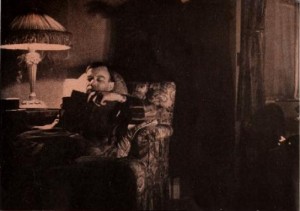
"Among the ten best, The Last Entry, running seven reels 16mm., is one of the most ambitious amateur photoplays ever undertaken and completed. The plot, requiring many elaborate interior sets, is based on a mystery story that opens with a house party. While a room is darkened for the projection of amateur films, one of the guests is murdered and all present may be suspected equally. The detective handling the case uncovers the fact that the murdered man, an author, has lived on blackmail effected by threats of exposure through publication, which throws suspicion on several of the guests of the house party who were discovered to be his victims. However, in the end, the murder is solved by screening the same pictures that were on the projector when it was committed. Although this plot offered great difficulties in the direction of large group scenes, the creation of the necessary lighting effects and the interpretation of the actors' roles, it is beautifully and suavely handled. In the film are several lighting treatments that may be listed as among the most effective ever achieved by amateurs. One chase sequence staged through long corridors, a large, dimly lighted attic and on the roof of the mansion at night in the rain, can be likened only to the effects secured in the best professional mystery photoplays. James F. Bell, jr., ACL, was director with Charles H. Bell, ACL, and Benjamin Bull, jr., ACL, cameramen and Lyman Howe, ACL, in charge of lighting." Movie Makers, Dec. 1932, 537-538.
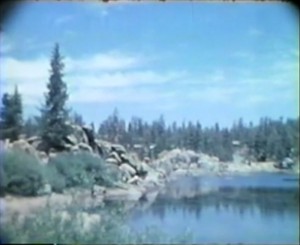
"An edited home movie by Arthur H. Smith of Smith's later years, living with his wife Blanche in Big Bear Lake, California, including a description of his filmmaking process." Archive.org
"Made by Mr. And Mrs. Chambers to advertise tea and to stimulate tea-drinking across Canada, and accompanied by a narrative by Mrs. Chambers, in English for English-speaking audiences and in French for French-speaking audiences. The equipment to make the film was loaned by the Dunne and Rundle camera shop in Vancouver, where the film was made.
"The puppet story is about a Princess who mysteriously falls asleep with an unknown disease, and her father, the King, who sends far and wide to discover a cure. Finally the Princess is revived with tea and the young man who brings it to her is rewarded with her hand in marriage. The sponsor of the film was the old Empire Tea Bureau, for whom the Chambers' worked during the 1930s." (Colin Browne, Motion Picture Production in British Columbia, 1898-1940 (1979), entry #0872.)
The film is listed in Browne's filmography as "Tea Bureau Puppet Show."
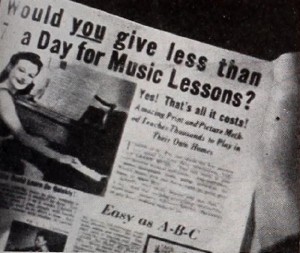
"Lend Me Your Ear is an almost perfect synthesis of shrewd planning, impeccable camera work, smoothly integrated music and general, overall charm. It is gay, glamorous and in good taste. In it, Erma Niedermeyer has caught the lighthearted spirit of 'teen aged American youth. That she was amply aided by her own attractive son was her further good fortune. As the film opens, the Boy is discovered musing over that classic advertisement which guarantees to teach you piano in ten easy lessons. "You too can be the life of the party!" it clarions. The Boy answers the call, the lessons start arriving and the fun begins. There is the light "running gag" of the harried postman, continually overwhelmed by the Boy's enthusiasm as he delivers each new installment; there is the time the piano refuses to play, clogged up as it is by a basketball in its "innards"; there is the tousle headed imitation of Franz Liszt at the age of fourteen — and more. There is, in climax, the Boy's devastating triumph amid a bevy of admiring beauties, as he becomes in truth "the life of the party." Geared to these sequences — which are presented in swift pace and with unerring command of the camera — is a musical accompaniment as suave as the film itself. A single commercial recording provides a slight and recurring background theme. All the remaining score — from the first hesitant scales to the final rocking rendition of a jazz hit — is in the Boy's own playing, especially recorded by Mrs. Niedermeyer to fit her own picture. It is an ineffable and irresistible combination, this Lend Me Your Ear, warmly deserving of the high honor it has won." Movie Makers, Dec. 1943, 457.
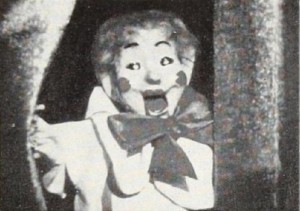
"The construction and performance of marionettes are skillfully pictured in Life Hangs By A Thread, by Paul R. Elliott and Joseph Dephoure. Aided by skillful lighting, a fine sound track perfectly harmonized with the action and an intelligent script, interest is closely held from the time a marionette is a lump of putty to its moments of glory when, in the hands of an experienced operator, it seems to take on a life of its own. Perhaps the most impressive thing about Life Hangs By A Thread is its careful step by step planning, indicating the sound belief by its producers that a movie should tell as much as possible pictorially, with the commentary used only to enhance the visual appeal." Movie Makers, Dec. 1948, 475-476.
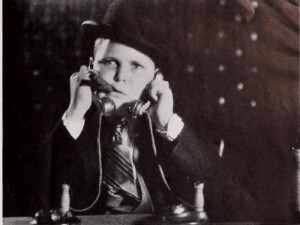
"In Little Geezer, running 400 feet, Theodore Huff, ACL, has produced one of the most able and amusing burlesque film stories of the amateur year, repeating his success of that earlier satiric classic, Hearts of the West. Again he has used, with amazing directorial facility, the neighborhood youngsters as his only actors. Again he has aped, with his own peculiar genius, the threadbare cliches of professional drama, poking fun in his filming as well as his titling. Little Geezer offers fine examples of real cinema, is the sort of thing amateurs can do as well or better than professionals and is delightfully amusing in the process." Movie Makers, Dec. 1932, 561.
"Theodore Huff, ACL, has done it again! That lone wolf producer of Hearts Of The West has paralleled the gorgeous fun of his earlier panning of the purple plains as he takes the gangsters for a ride in Little Geezer. The Big Shot, his lieutenant, Greta Garbage (" — more to be pitied than sniffed at") and Scarface Macaroni are all there, played by the neighborhood kids, no one of them over eleven years old. Through their naively serious acting and his own genius at direction and editing. Mr. Huff has riddled with bursts of laughter the machine gun monarchy of professional filmdom." Movie Makers, Sept. 1932, 398.
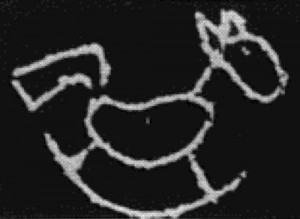
"An abstraction made by scratching patterns on black and white film with a needle. The clear areas were tinted with acetate dyes - thus adding color. The visual images are fitted to the mood and tempo of a commercial recording. The film was made without the use of a camera and required no developing. A novel presentation. This will be blown up to 16mm and will be included in the Package," PSA Journal, Oct. 1962, 35.
documentary chronicle
"In London Terrace, a picture made to advertise an apartment house, T. W. Willard, ACL, has shown quite clearly that interesting and attractive scenes and well planned action can combine to make a most effective sales argument. The interiors were even better handled than in Mr. Willard's Honorable Mention winner for 1934. The film has an air of complete confidence in presentation that was largely because of effective planning and direction, items very often slighted in the production of commercial pictures. The film succeeds in entertaining an audience and holding its attention consistently, in spite of a continuous sales message. Excellent, straightforward photography of many rather difficult sets was featured throughout the entire reel. The picture shows clearly how well 16mm. can be used for industrial work." Movie Makers, Dec. 1935, 550.
Total Pages: 15